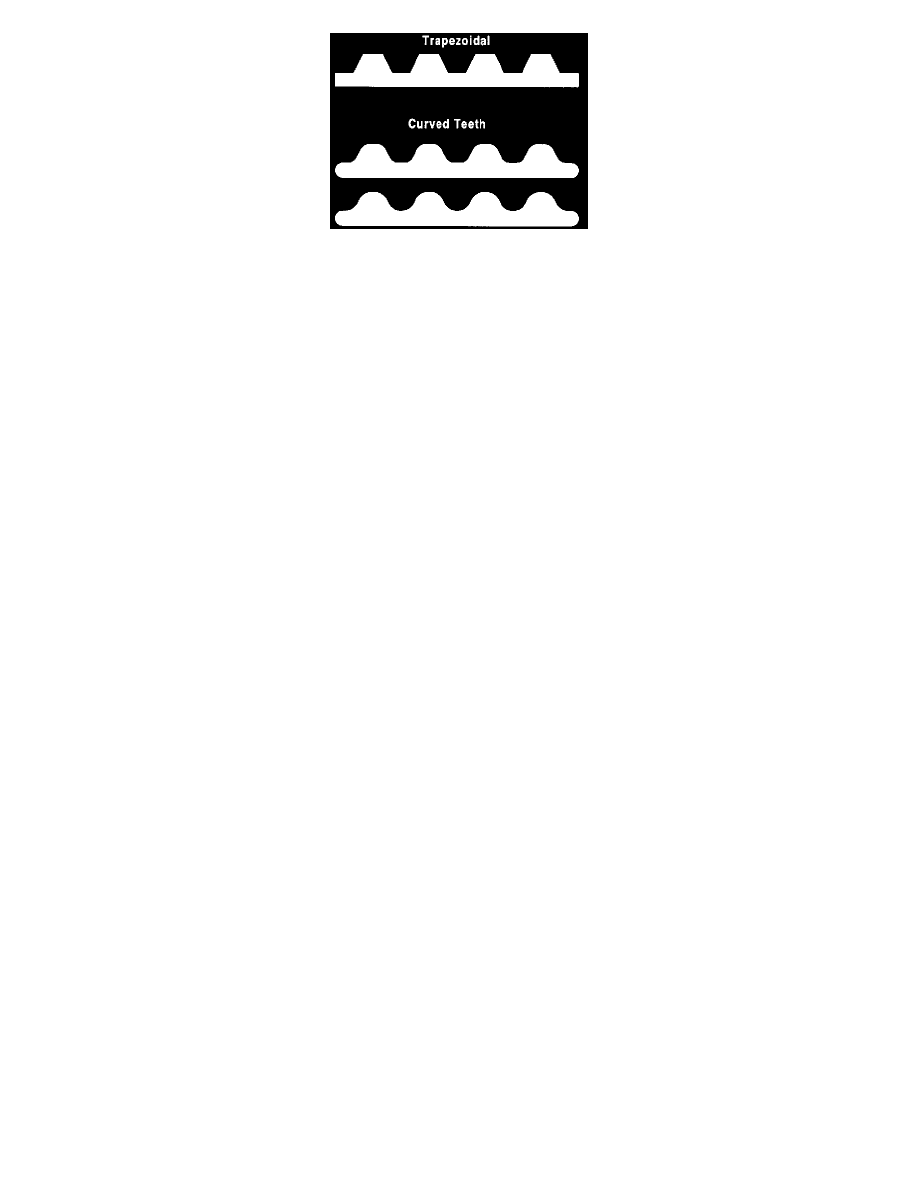940 L4-2320cc 2.3L DOHC VIN 89 B234F FI (1991)

Incorrect Type of Timing Belt
Timing belt teeth are available in several different types. Compare the new belt to the old one and verify the teeth are the same shape. Timing belt
types are not interchangeable.
Pre-Installation Inspection
PRE-INSTALLATION INSPECTION
-
Prior to installing the timing belt inspect the teeth of the crank and cam pulleys for burrs or damage. Light burrs may be removed, but any damage
which permanently mars the teeth/belt mating surface will require the pulley to be replaced.
-
Inspect the inside of the timing belt covers for rubbing or wear. The plastic covers may warp, causing the pulleys or belts to rub against the inside
of the cover.
-
Inspect the tensioner pulley for wobble or looseness. The pulley should spin freely with no rough spots or lateral (side-to-side) movement.
-
Inspect the tensioner pulley surface. It should be clean and free of nicks and burrs. If any damage is noted the pulley should be replaced.
-
Inspect the camshaft and crankshaft oil seals for leakage. Any seal which shows signs of leakage should be replaced.
WARNING: Oil leakage will damage the new timing belt.
Maintenance
TIMING BELT REMOVAL
-
Prior to removing the timing belt, inspect all drive belts. Since the drive belts will need to be removed to replace the timing belt it would be
convenient to have any necessary replacement belts on hand should any the drive belts show excessive wear.
-
After the timing belt covers are removed, verify the camshaft and crankshaft are properly aligned.
-
Verify that all timing belt cover gaskets and inspection hole covers are intact. Any missing gaskets or covers could allow moisture and debris to
enter the covers and damage the belt.
NOTE: In cold climates, any moisture which enters the covers may eventually freeze on the timing belt or between the belt and the pulley,
resulting in the belt skipping teeth.
TIMING BELT INSTALLATION
-
When positioning or removing the camshaft and crankshaft pulleys, do not grasp the teeth of the pulleys with pliers or any other metal object.
CAUTION: Any nick or burr left on the pulleys may result in premature belt failure.
-
When installing the timing belt:
-
Do not use any device to pry the belt over a pulley
-
Do not lubricate the pulleys with any type of fluid or penetrating oil to ease in slipping the belt on.
